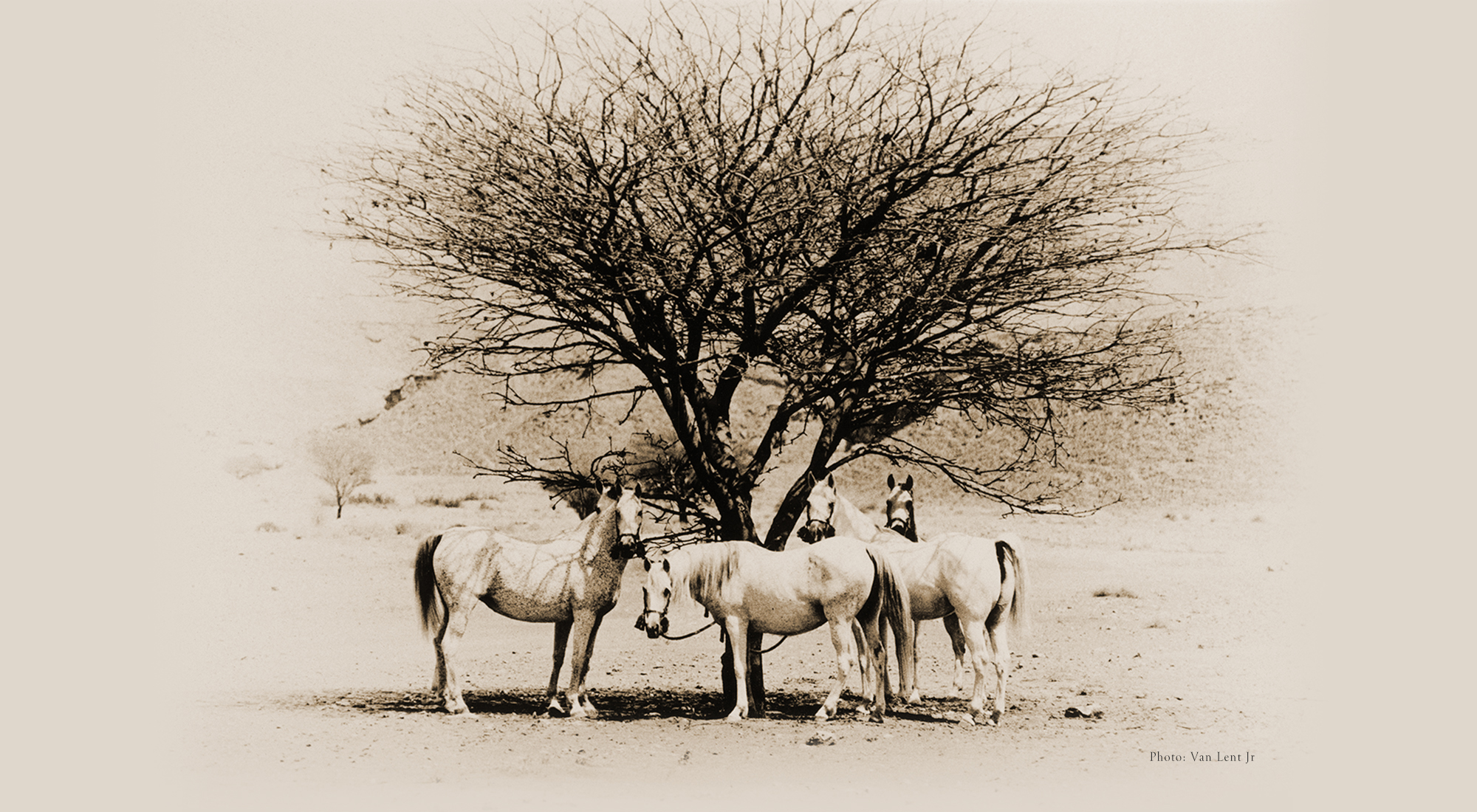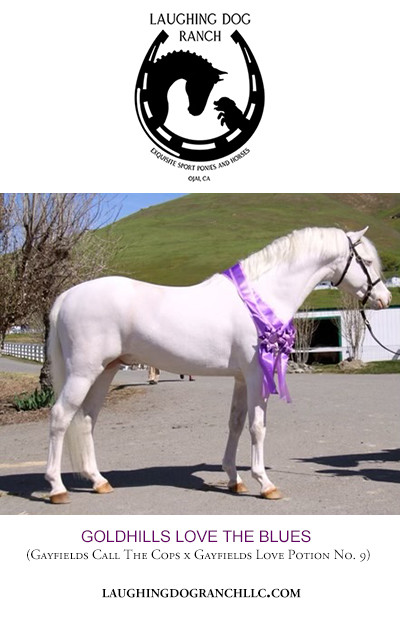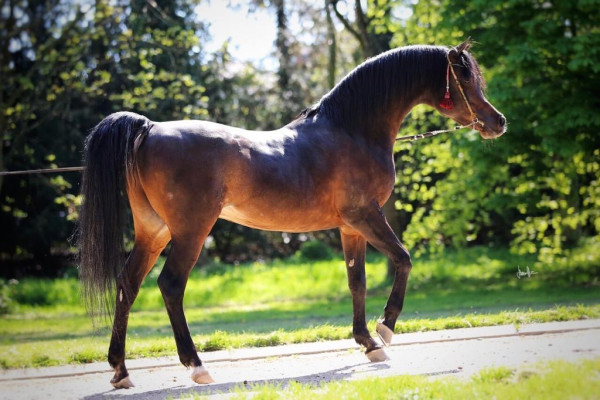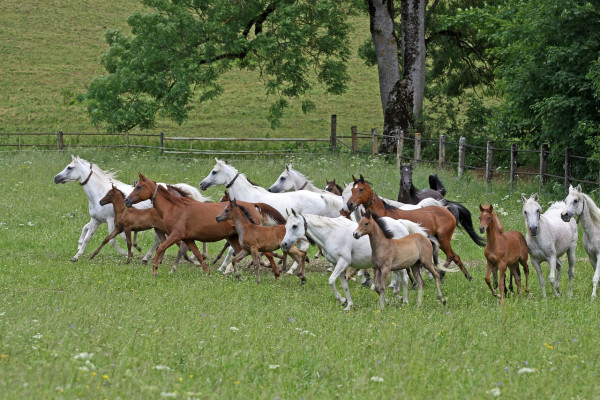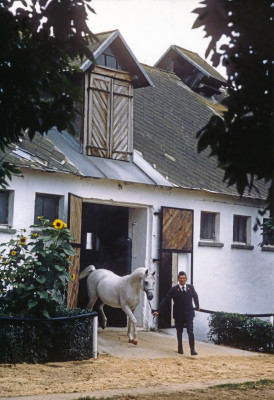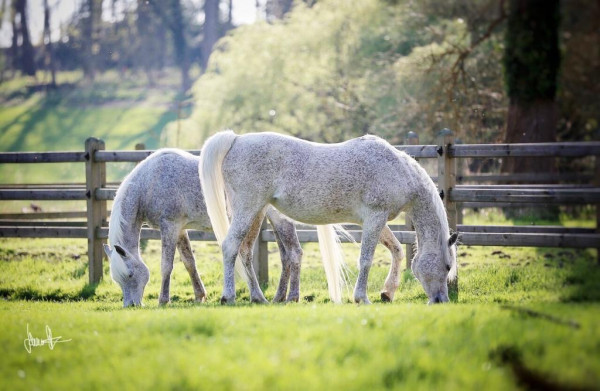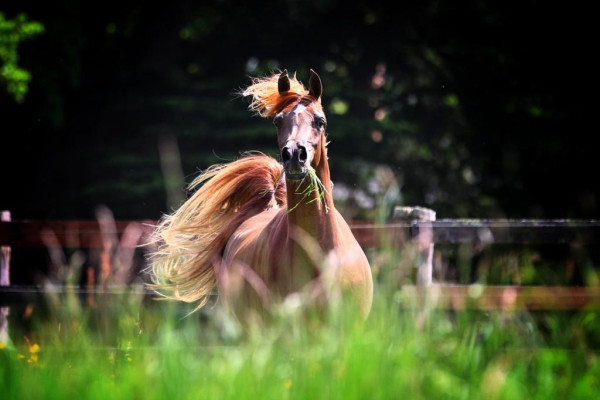New Test Offers Screening For Melanoma In Horses
by Cindy Reich
Researchers at the University of California at Davis have made an important discovery in the role that genes play in the development of melanomas in grey horses. Grey genes are significant in the Arabian breed, and this information may help breeders to understand whether a horse may be prone to developing melanoma or not.
In many cases, melanomas in grey horses appear in middle age and often do not become a problem (unless malignant).
According to U.C. Davis, melanomas affect approximately 80% of grey horses over the age of 15 years. While it is more common for horses to develop melanomas after the age of seven or eight years, they can develop at any age.
Melanomas usually start out as small, black nodules that do not go away. More than 50% are commonly found in the perineal area (under the tail, around the anus) but can also form in the skin around the ears and eyes. Melanomas are formed from skin cells (melanocytes) and in humans are associated with exposure to sunlight. However, in horses, this is not the case, and as the researchers have determined, melanomas are genetically based.
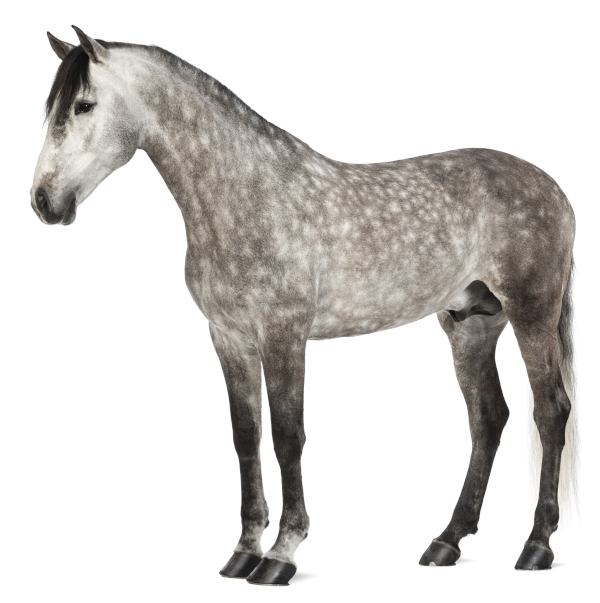 Andalusian with the gray gene showing progressive depigmentation.
Andalusian with the gray gene showing progressive depigmentation.
Melanomas can be benign (non-cancerous) or cancerous. Usually, internal tumors that have originated from skin cells tend to be more serious, while external tumors may not cause an issue, unless the tumors grow to the point of obstructing bodily function. For example, tumors around the anus that grow to the extent that it blocks the horse’s ability to pass manure.
Horses with one copy of G3 (G1/G3) grey more quickly and are more at risk to develop melanoma.
Melanomas can also be found in the throat and paratoid gland area, where, even if large, generally do not obstruct the horse’s breathing or eating. However if there are melanomas in the guttural pouch, it may indicate that there are melanomas that have spread throughout the body. Malignant melanomas are aggressive and can spread quickly to organs and throughout the body cavity.
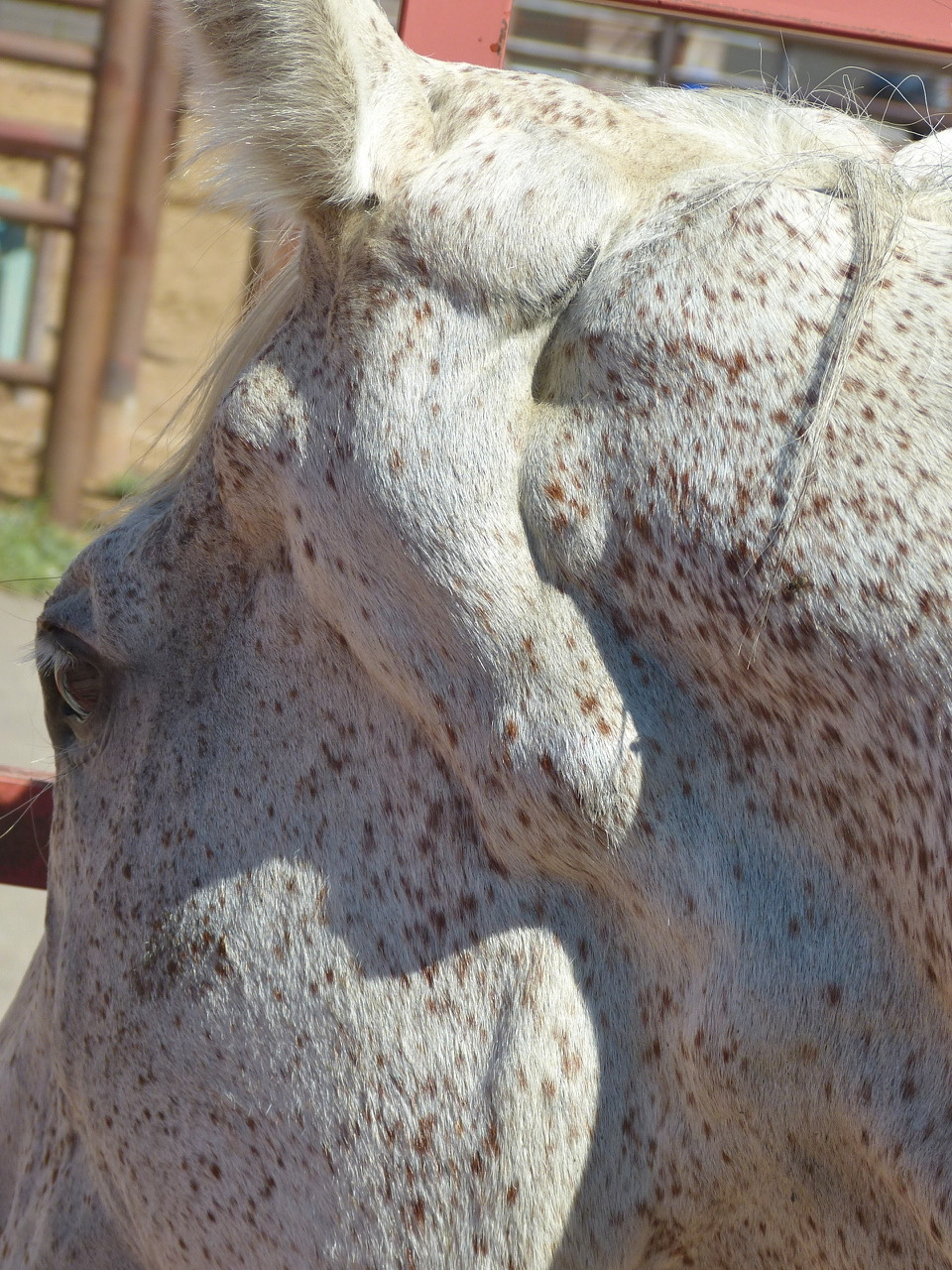 Internal melanomas, most likely in parotid gland and surrounding area of the head and neck.
Internal melanomas, most likely in parotid gland and surrounding area of the head and neck.
In many cases, melanomas in grey horses appear in middle age and often do not become a problem (unless malignant) as the horse ages. Diagnosis can often be made by your veterinarian visually, as the tumors in the skin are very distinctive, but testing a sample is the best diagnostic tool.
Some people refuse to buy or breed grey horses because of the fear of melanomas. However, with the findings of this study from U.C. Davis, horse owners and breeders can screen their horses genetically to see if they will be at risk for melanoma development.
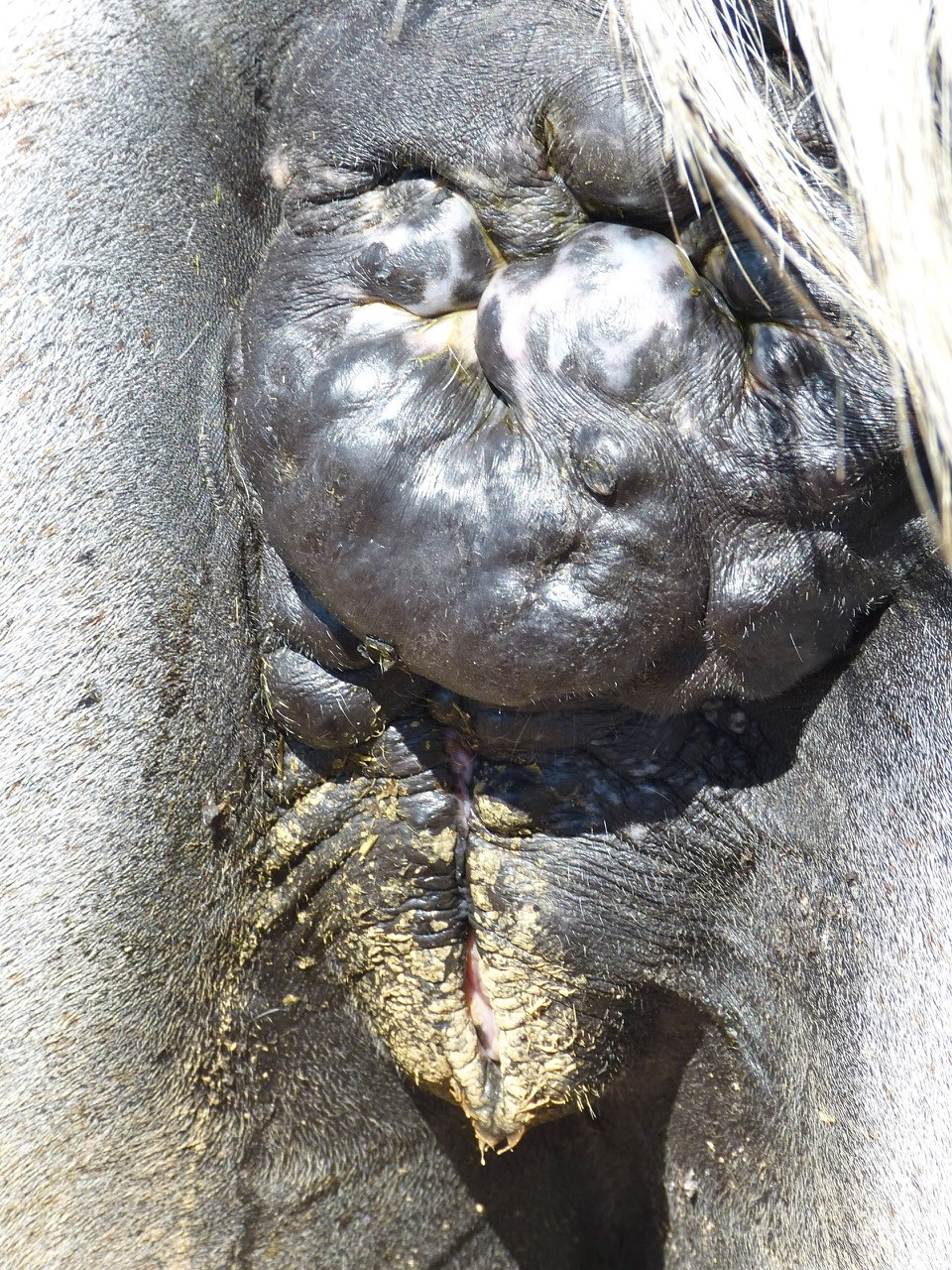 Melanomas around the anus of a horse.
Melanomas around the anus of a horse.
All grey horses are born with a base color of red or brown and the grey gene will override the base color as the horse matures. The findings showed that two different alleles (different versions of the same gene in a portion of DNA) are responsible for the greying gene. If a horse has no duplications of the grey allele (G1) the horse will not turn grey and will not be at risk for melanoma.
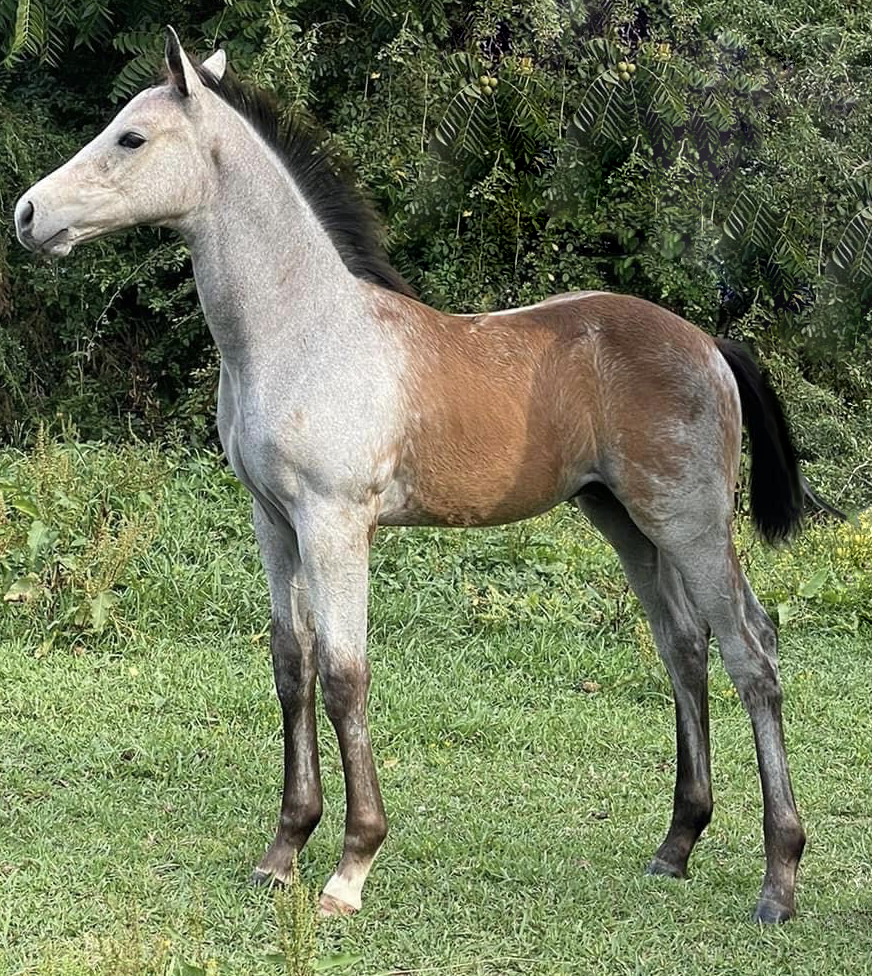 Warmblood foal displaying progressive depigmentation. Photo used with permission of Mary King Messenger.
Warmblood foal displaying progressive depigmentation. Photo used with permission of Mary King Messenger.
The G2 allele causes slow greying and a reduced risk of melanoma. The G3 allele causes fast greying and carries the highest risk for melanoma. Horses may have one copy of the allele or duplicate copies. Horses with one copy of G3 (G1/G3) grey more quickly and are more at risk to develop melanoma. If they have two copies of the allele (G3/G3) horses have the fastest interval of turning grey and the highest risk for melanoma. Horses that have either one (G1/G2) or two copies of the G2 allele (G2/G2) were slower to grey and did not have as high a risk of melanoma.
…with the findings of this study horse owners and breeders can screen their horses genetically to see if they will be at risk for melanoma development.
U.C. Davis can now test for these alleles and give the owner or breeder the tools to determine the incidence and/or possibilities of producing grey horses that may be at higher risk for developing melanomas. All that is required for testing is a hair sample including the root, similar to what is done for DNA testing for parent verification. For more information, check out the U.C. Davis Veterinary Genetics Laboratory at: https://vgl.ucdavis.edu/test/gray_copy_number.



